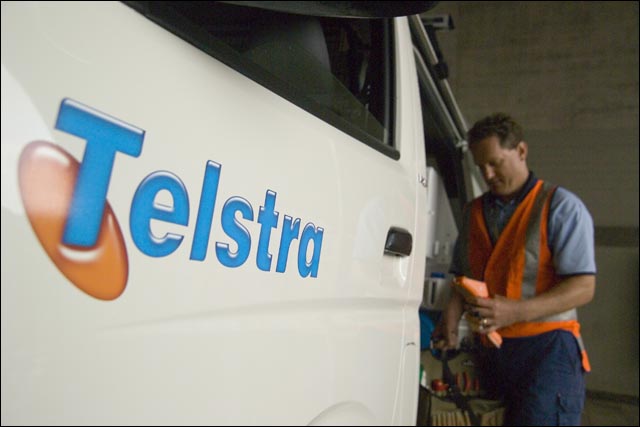news Australia’s competition regulator today signalled it would accept the final version of Telstra’s plan to structurally separate its operations and migrate its customers onto the National Broadband Network over the next decade, in a landmark reform pushed for by Telstra’s rivals for the past decade.
The Structural Separation Undertaking commits Telstra to full structural separation of its wholesale and retail business units by July 2018. In practice, this separation will take place through the progressive disconnection of fixed voice and broadband services on Telstra’s copper and HFC networks and migration of those services onto the National Broadband Network.
In addition, the SSU and its accompanying migration plan set out the measures which Telstra will put in place to provide transparency in the supply of services to its wholesale customers during the NBN transition period over the next decade, as well as providing equivalence in the delivery of services — for example, allocating the same terms to rival ISPs such as Optus, iiNet, Internode and TPG as it does its own retail division, which typically operates under the ‘BigPond’ brand. The documents have gone through several iterations over the past year as the industry has given the ACCC feedback on Telstra’s plans.
In a statement issued this morning, Australian Competition and Consumer Commission Chair Rod Sims described the ACCC’s acceptance of the documents as “a significant milestone in the structural reform of the telecommunications sector”. “This SSU has been the subject of extensive consultation and public discussion. The ACCC acknowledges contributions from industry, as well as the preparedness of Telstra and NBN Co to modify the undertaking in response to legitimate concerns,” said Sims.
“In particular, Telstra has made substantial improvements to its interim equivalence and transparency commitments, which are intended to ensure that wholesale customers gain access to key input services on an equivalent basis to Telstra’s retail business units during the transition to the National Broadband Network.”
The ACCC added that the measures over time should result in greater competition in Australia’s telecommunications market as the industry moved to the wholesale-only NBN, as compared to the current system, where Telstra provides both wholesale services over its copper network as well as competing in the retail market with its wholesale customers. Those wholesale customers will now likely get immediately better terms from Telstra, into the bargain.
“A key feature of the new regime is that Telstra has undertaken to deliver price equivalence to all its copper-based access services and exchanges through new wholesale contracts that will specify that, as a default position, the charges set out in ACCC access determinations are to apply,” the ACCC said. “The recent declaration of the wholesale ADSL service means that this principle will also apply to that service.”
“Telstra has also undertaken to renegotiate existing wholesale ADSL contracts in light of the ACCC’s recent access determination if requested by a wholesale customer.”
One interesting facet of the ACCC and Telstra negotiations has been that a controversial clause prohibiting Telstra from marketing its mobile broadband services as competing with the NBN has been removed from Telstra’s contract with the National Broadband Network Company, with Telstra’s marketing of those services to be governed by “the usual requirements of the Australian Consumer Law”, according to the ACCC.
Telstra issued a brief statement acknowledging the ACCC’s acceptance of the documents today, with CEO David Thodey noting that the telco would now work with the Government and NBN Co to finalise “the remaining largely procedural matters” pertaining to its NBN deal with the pair. “There are a small number of matters left to finalise with the Government including NBN Co shareholder approval and Telstra receiving ministerial waivers from the legislative requirement to divest our HFC network and our share in FOXTEL,” said Thodey.
Prime Minister Julia Gillard and Communications Minister Stephen Conroy are also currently holding a press conference about the deal.
Image credit: Telstra


How long has it been? 10 years? When was Telstra first (partly) “privatised”?
Why on earth has Telstra not been cut down the middle like the po\\Brits did the BT, and the hardware retained by the Commonwealth? We could have saved ourselves so much angst and — dare I say it — expense.
BTW, doesn’t “Commonwealth” have a vaguely Marxist flavour of “wealth being divided equally amongst all”?
Or do I have it all upside down, and we’re too stupid to know what’s truly important? Am I being un-Australian?
You’re preaching to the choir mate, we all know Howard made a massive mistake when he sold it – even he knows it.
It should have been split then, if it had’ve been split – we wouldnt be rebuilding the entire thing with fibre, we’d purely be upgrading as needed AND we’d all have some semblance of basic internet.
“Common wealth” is an early English rendering of “res publica”, the Latin term that is now usually translated “republic”.
When it was put forward in the 1890s as part of the official title of the new federal entity of Australia, there was some consternation that the name itself promoted republicanism. Now, of course, hardly anyone remembers that fact.
“…a controversial clause prohibiting Telstra from marketing its mobile broadband services as competing with the NBN has been removed from Telstra’s contract with the National Broadband Network Company”.
interesting, as i know some had a cow about that clause when it was first brought up. never mind the issue has been sorted tho, im sure we will still hear bleating from the same quarters about the other ‘anticompetitive’ aspects of the NBN. roll on progress!
/eagerly awaiting the new rollout data now full Telstra access is through
Comments are closed.